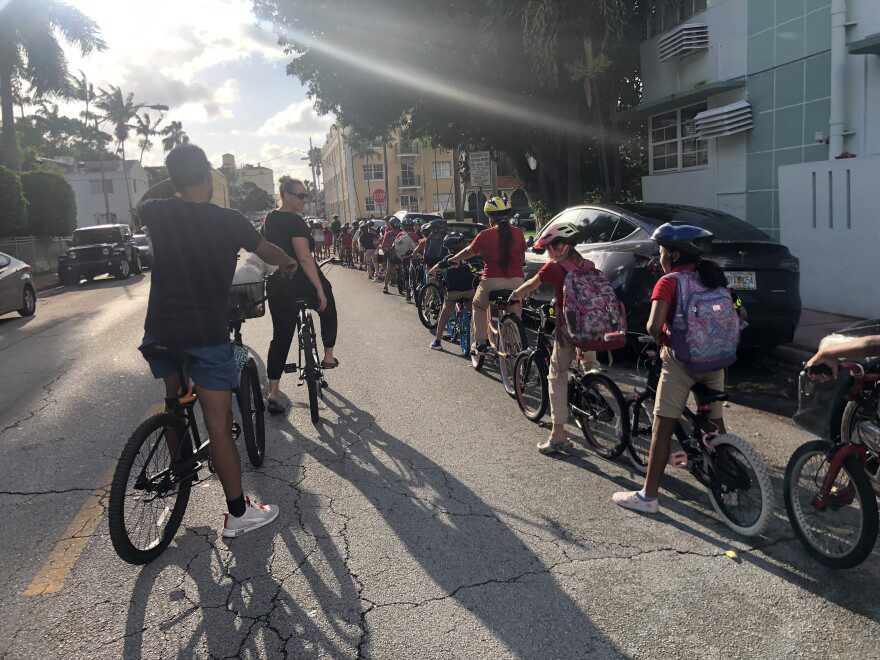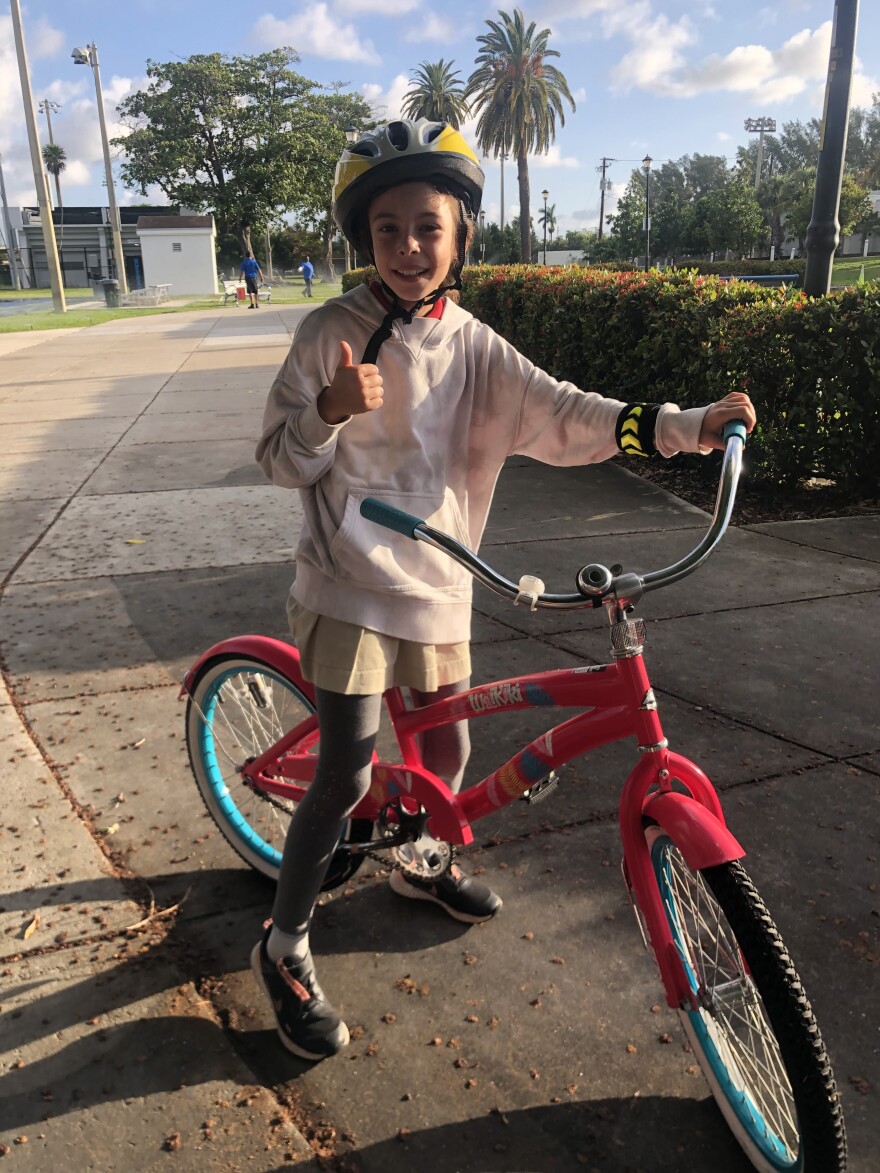
South Florida is a dangerous place to bike. Some students and advocates are trying to change that
WLRN | By Kate Payne | May 30, 2022
For kids of all ages, riding a bike is a little taste of freedom. But for many in South Florida, it’s not a safe way to get to school. Some students and advocates are trying to change that.
Bright and early on a recent school day in Miami Beach, dozens of kids and their parents milled around on their bikes and scooters at Flamingo Park, getting ready to ride to Fienberg-Fisher K-8 Center down the street.

Eight year old Curi Deppen was proudly sporting a pink beach cruiser with blue handlebars.
“I like that it has lights and in the night they glow and make figures,” she said.
Deppen loves to ride her bike to the pool and to the beach — and sometimes she even rides to school, where she’s finishing out second grade.
When asked what’s more fun — riding in a car to school or biking — she was quick to reply, “I think the bicycle because I can see all the things.”

The University of Miami’s BikeSafe Program organized the ride to school event, with support from the Miami Beach Police Department, which handed out helmets and reflector bands.
As it got closer to 8 am, the kids clambered onto their razor scooters and bikes, some still using training wheels. With parents and police officers leading the way, the group took off down 14th St. Some neighbors walking by couldn’t help but smile at the sight of a caravan of dozens of kids riding to school.
With its dense street network and dedicated bike lanes, much of Miami Beach is safer and easier to bike than other parts of Miami-Dade County. On many South Florida streets, this sight would be almost unimaginable.
The event is part of an effort to educate students on cycling safety and to draw attention to local policies and civil engineering that can make riding a bike in South Florida so dangerous.
“Bike safety, especially for kids — and anybody riding of any ability — really requires safe infrastructure. And that safe infrastructure are protected bike lanes,” said Kurt Kaminer, the social marketing manager of BikeSafe. “Bike safety starts with a safe place to ride.”
Across the country, the number of students who ride their bikes to school has dropped dramatically in the past 50 years, according to the National Center for Safe Routes to School. In 1969, nearly half of children ages 5 to 14 usually walked or bicycled to school. By 2009, that number had dropped to 13%.
Urban sprawl, interstate expansion, the development of car-oriented neighborhoods, and a shift away from the neighborhood school model have all made it more difficult for kids to walk or bike to school.

South Florida continues to rank as one of the deadliest places in the country for cyclists, according to the Dangerous By Design report compiled by the group Smart Growth America.
Whether kids can bike to school says a lot about overall pedestrian safety, said Matthew Gultanoff, founder of the advocacy group Better Streets Miami Beach.
“Basically, if your child isn’t comfortable riding on the street, whether it’s a painted bike lane or some other sort of facility, then we’ve failed,” Gultanoff said.
For cyclists and pedestrians, Gultanoff said street safety largely comes down to speed: how fast a car is traveling determines how severe a crash will be.
According to a study by AAA, a pedestrian hit by a car going 23 miles per hour has a 10% chance of dying. At 50 miles per hour, the risk of death jumps to 75%.
“We have streets that are designed for speed,” Gultanoff said. “Enforcement is not really the answer. You have to design the streets so that people will drive slowly, drive courteously and respect everyone out there.”
Gultanoff and other advocates say building protected bike lanes and slowing down cars will save lives — and make cycling safer for all ages.





